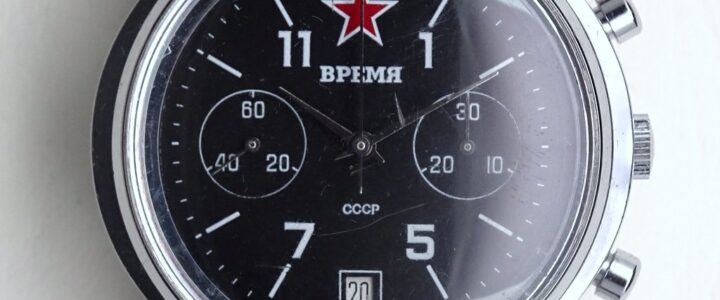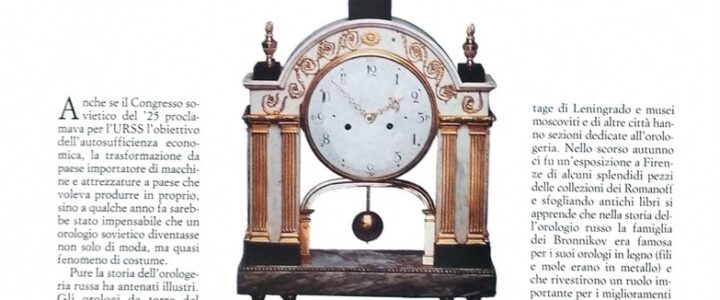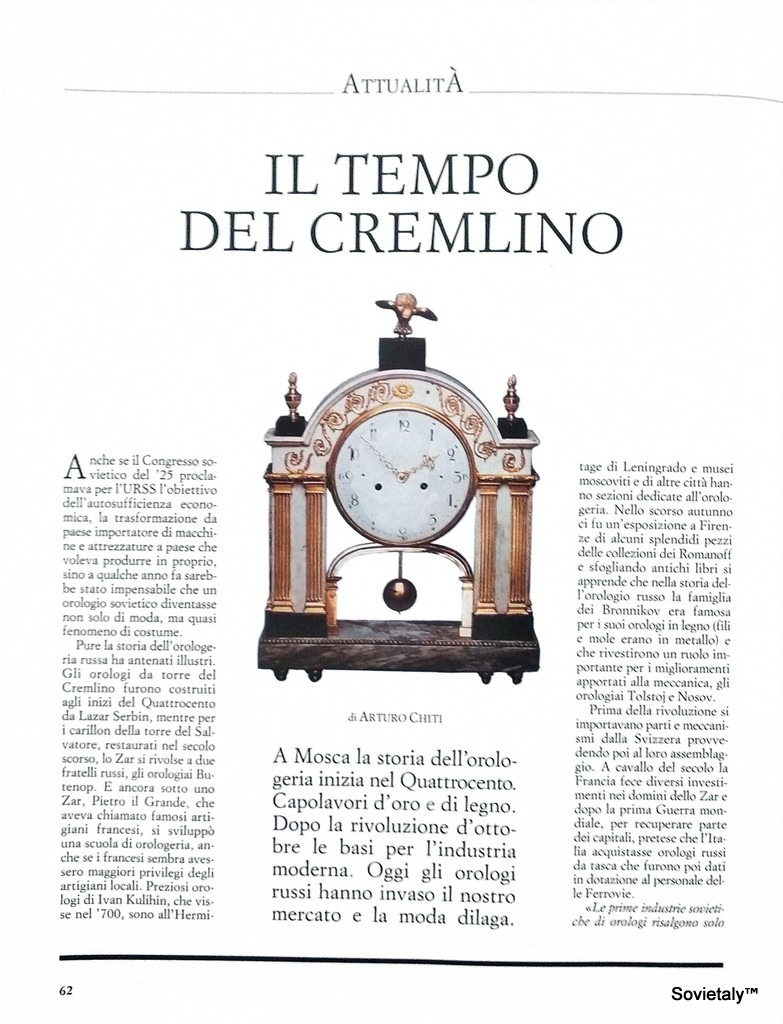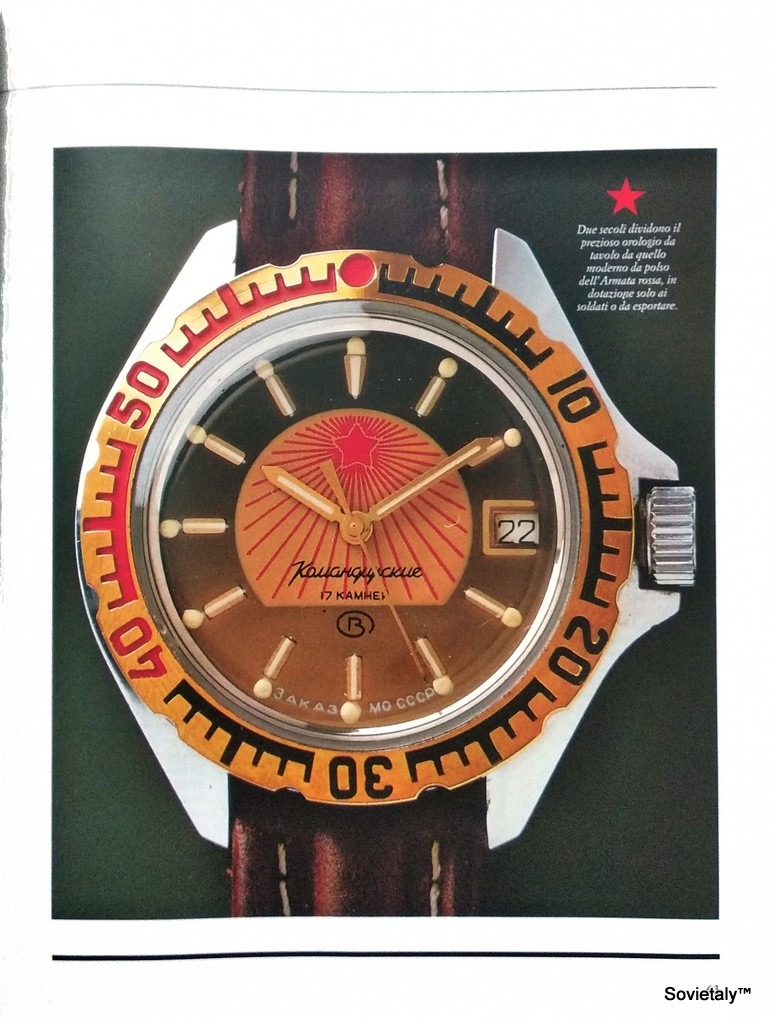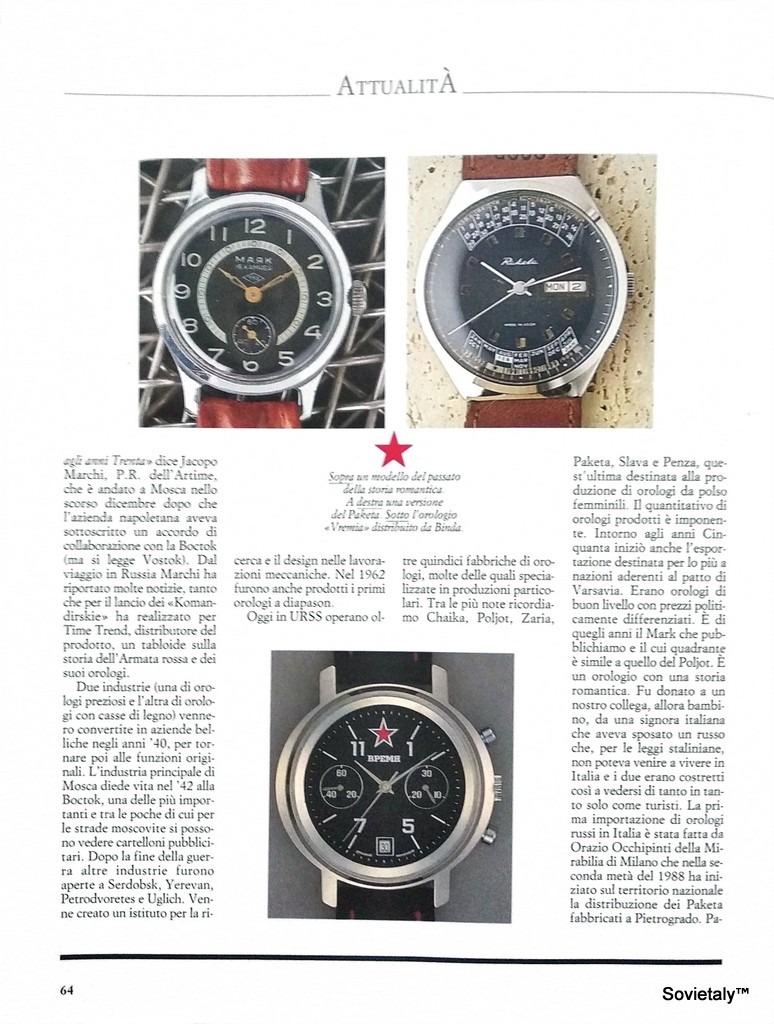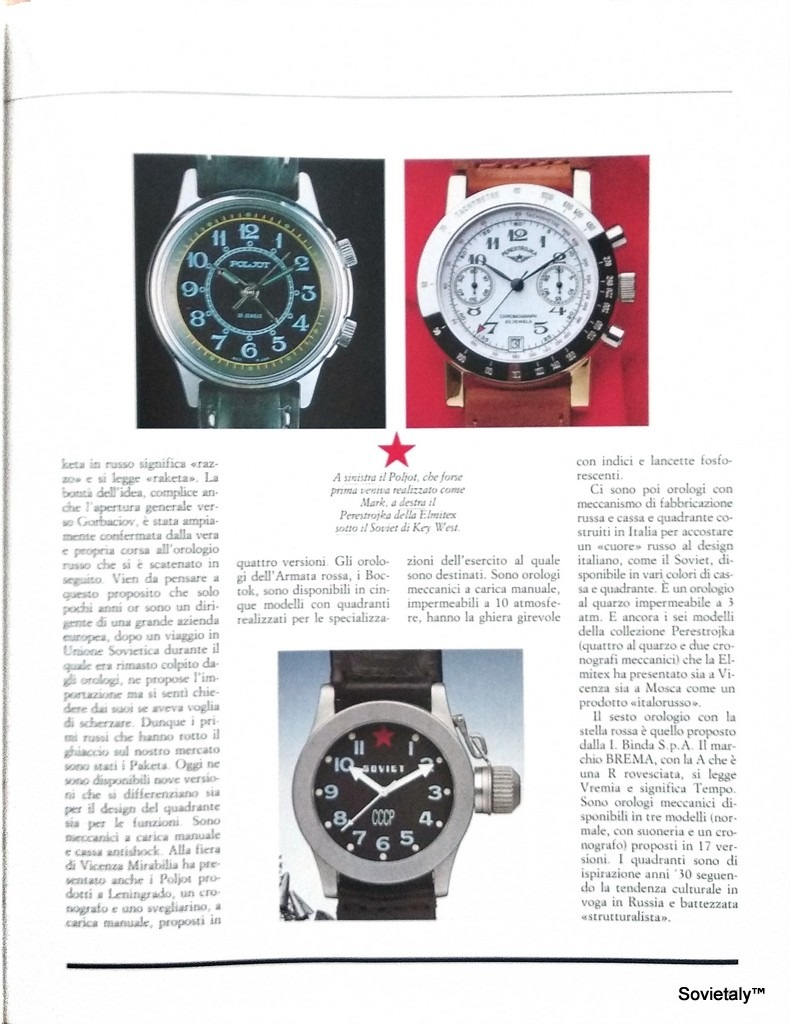Vremia watches, also known as Vremja (in Cyrillic время), are a fascinating example of how international collaboration can create unique and high-quality products. These watches were created in the late 1980s, thanks to the Italian company Binda, with the aim of capitalising on the growing popularity of Soviet culture in the West.
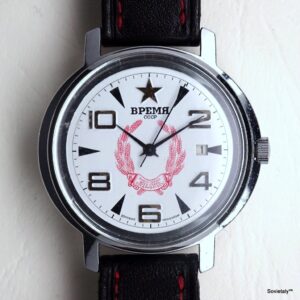
The Birth of the Vremia Brand
The BPEMR (BPEMA) CCCP brand was officially registered on 24 March 1989, during a period of commercial opening in the USSR under Gorbachev’s leadership. This opening allowed for the export of various Soviet products to Western markets, where they were enthusiastically received thanks to their exotic charm and robust quality.
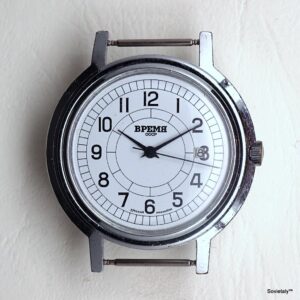
Features of Vremia Watches
Vremia watches are distinguished by a range of models with reliable mechanical movements such as the Slava 2414, Poljot 2612.1, and Poljot 3133. Their dials, essential and clean, embody the Soviet style of the era. Some models feature distinctive symbols like the Red Star, while others are more subtle, with a small “cccp” inscription in the centre of the dial.
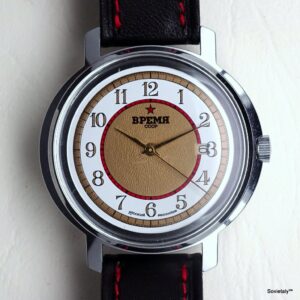
Binda: The Italian Heart of Vremia Watches
Founded in 1906 by Innocente Binda, the Binda company has played a crucial role in the watch sector for over a century. Under the leadership of his grandsons, Simone and Marcello Binda, the company continues to produce and distribute high-quality watches. Binda Italia is known for its ability to combine innovative design and advanced technologies, offering a variety of products ranging from fashion models to more classic and technical watches, including “Swiss Made” timepieces.

The Uniqueness of Vremia Watches
Vremia watches represent a perfect fusion of Russian tradition and Western craftsmanship. The “zerone rosso” model is an emblematic example of this mix, with a design that could easily have been produced by Poljot. Even the time-only and alarm clock models are highly appreciated for their quality and design.
These watches are a true hybrid: Italian construction with Russian mechanics. While they are adapted to the Italian market, they retain a unique charm that distinguishes them from traditional Russian watches. Despite the criticisms of purists, Vremia watches offer exceptional value, with accessible prices ranging from 100 to 150 euros.
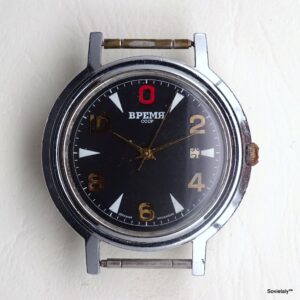
Unique Details on the Case Back
A distinctive detail of Vremia watches is the inscription on the case back, which reads:
“Часы собранные в Швейцарии, двигатель механический подлинный русского производства. Mechanical movement originally produced in Russia, watch assembled in Switzerland.”
This inscription highlights the combination of Russian mechanics and Swiss assembly, ensuring the authenticity and high quality of these watches.
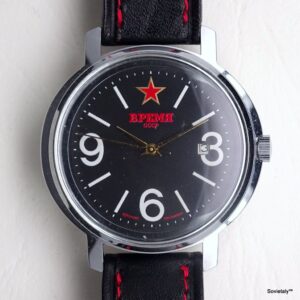
Conclusion
Vremia watches are a fascinating chapter in the history of watchmaking, characterised by a unique mix of Soviet aesthetics and European quality. Thanks to Binda’s initiative, these watches reflect the best of both worlds, combining attractive design with high standards of quality. A true treasure for watch enthusiasts looking for something unique and meaningful.

